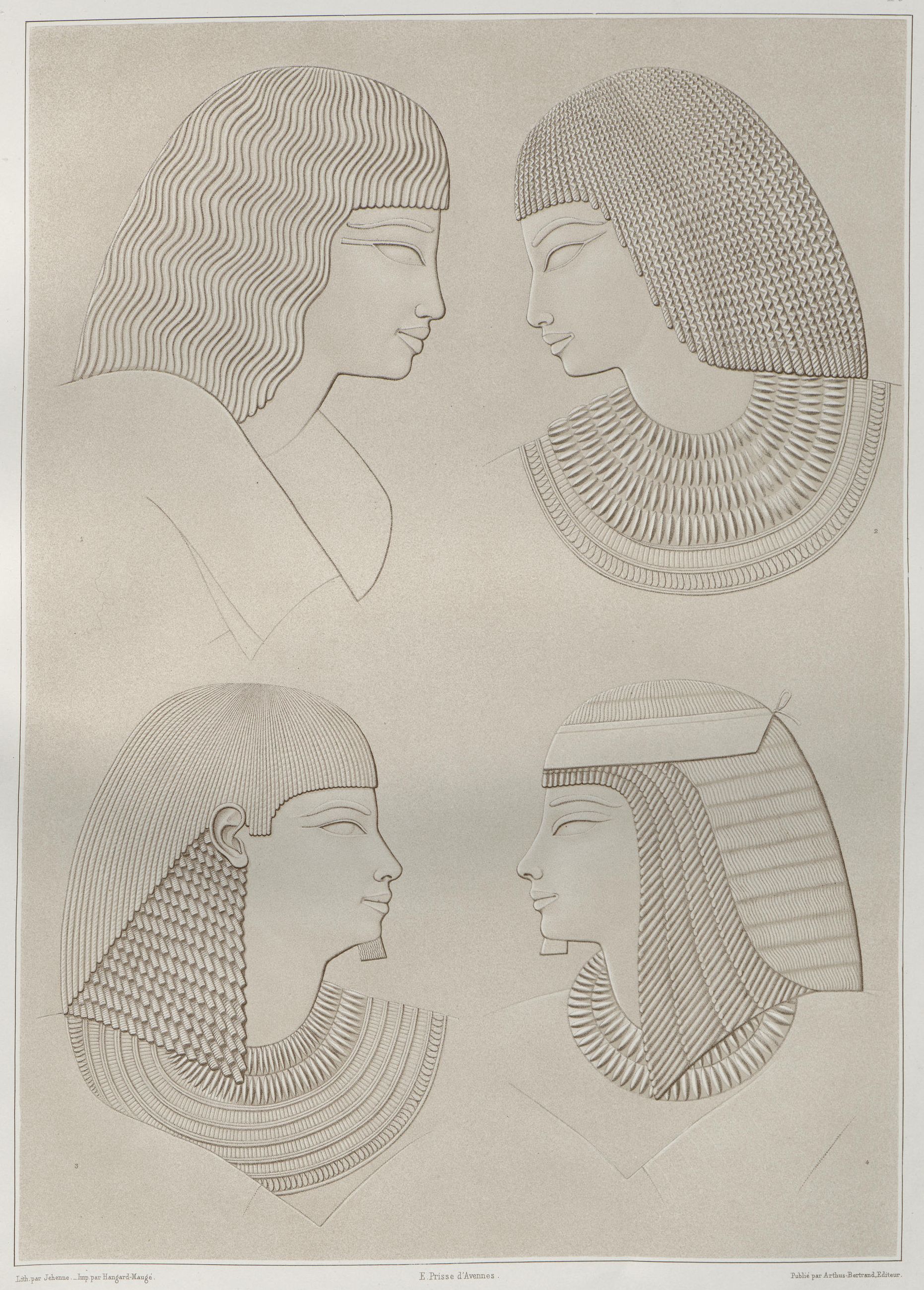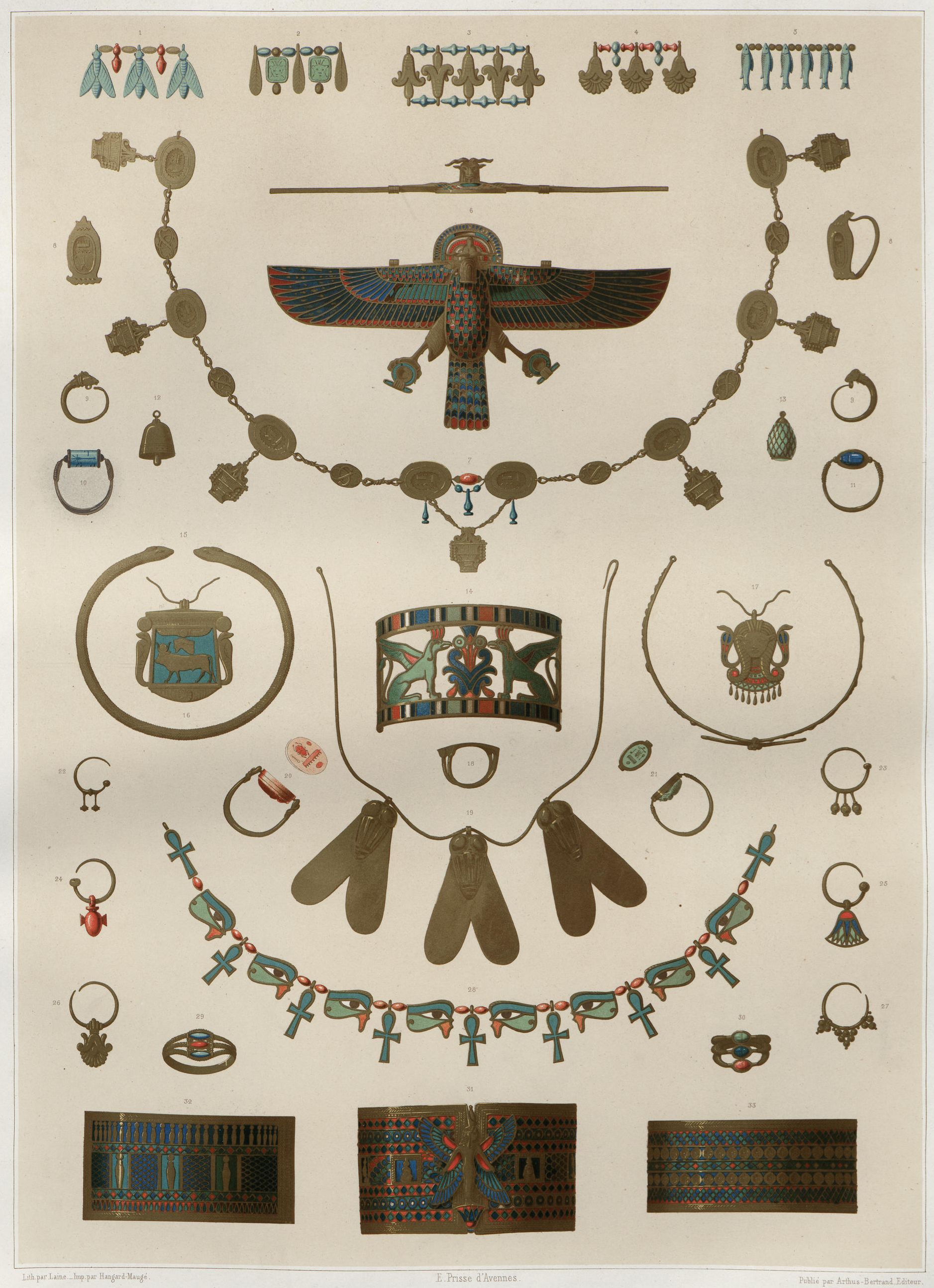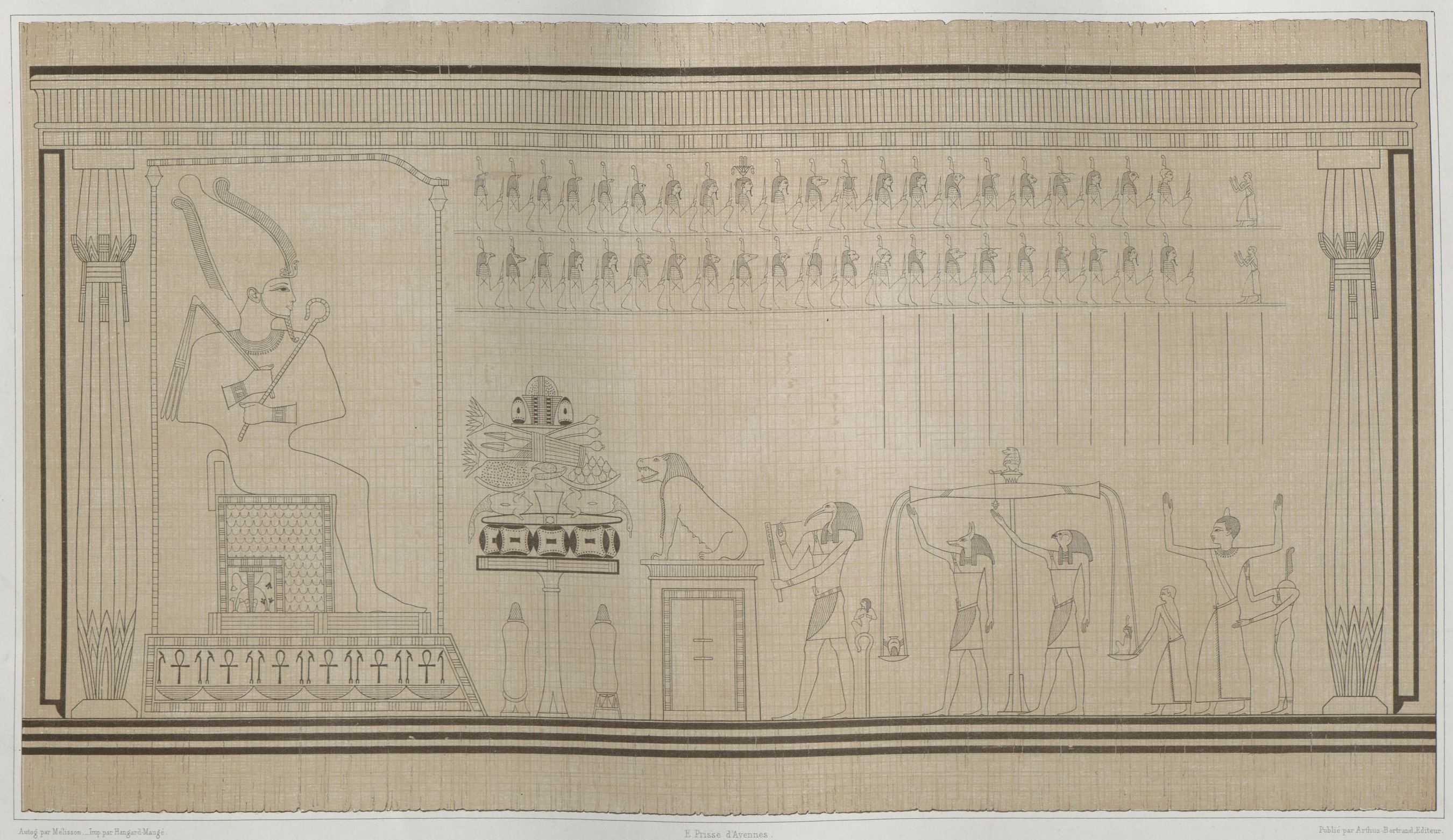Émile Prisse d’Avesnes (d’Avennes) (1807-1879) was an important mid-19th century French Egyptologist and something of a polymath. He was a soldier, engineer, writer, illustrator and talented linguist.
From 1827 to 1844 d’Avesnes resided in Egypt, teaching cartography and working as an engineer for a time, but eventually he devoted himself to documenting and studying the archaeological treasures from ancient Egypt. He became proficient in hieroglyphs, on the back of Champollion’s translations of the Rosetta Stone, and learned to speak at least half a dozen languages fluently during his expeditions around Egypt and further afield in the Arab world.
Ransacking of the artefacts was rife in those days of course and d’Avesnes helped excavate and transfer a large shipment of portrait reliefs from the Valley of the Kings to France, ostensibly to prevent their theft and use as local building material. The brazen act would earn d’Avesnes the Legion of Honour award when he returned to his homeland.
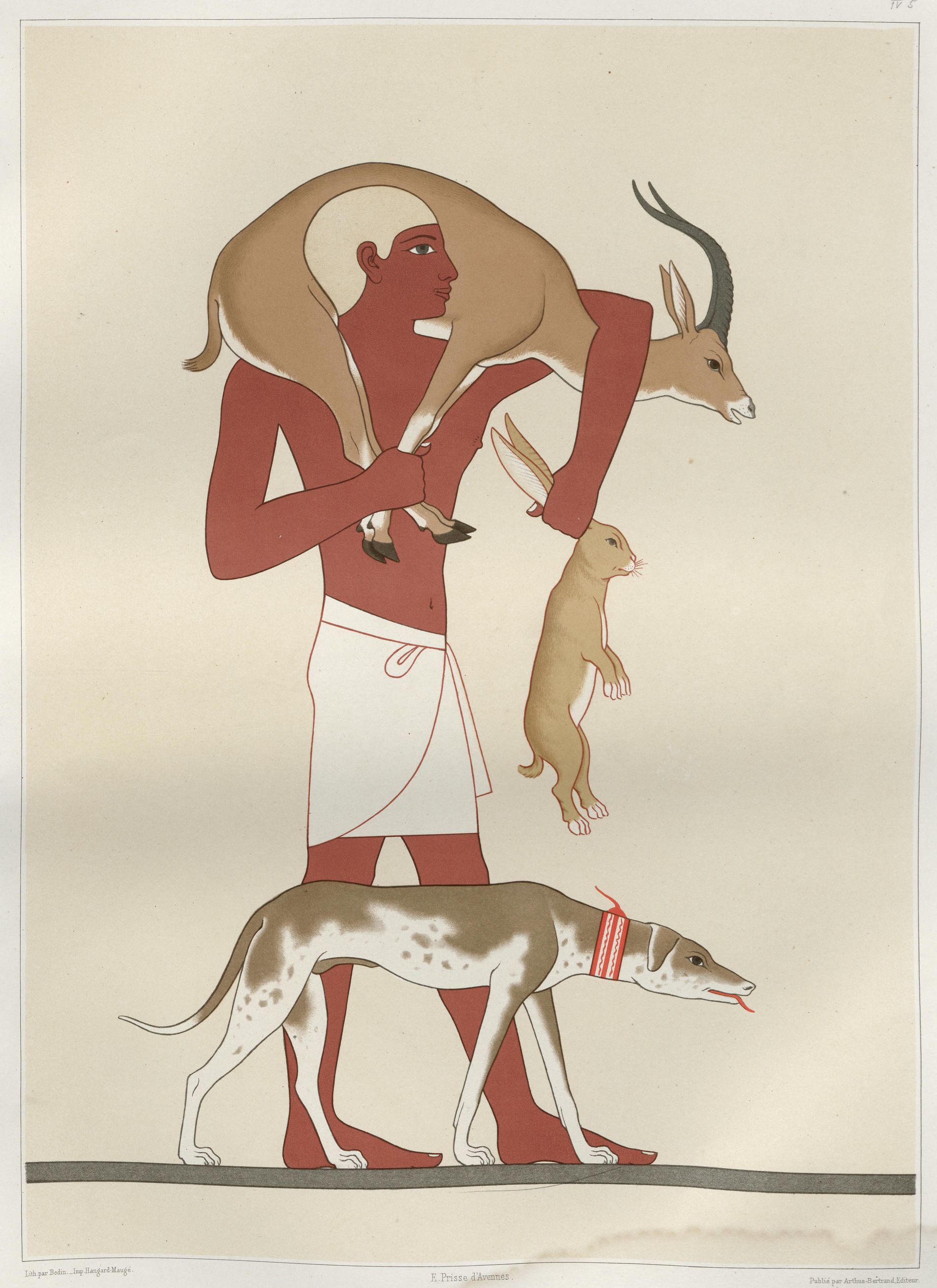
Return from the Hunt – from a painting at the Theban Necropolis (17th Dynasty)
He published a number of Egypt-centric works in the decade following his return to France and eventually set about obtaining support for a further expedition which was undertaken from 1858 to 1860. On this occasion he was accompanied by a photographer (the photographs are now located in the French National Library).
“When he returned to Paris in I860; Prisse brought 300 folio drawings of paintings of various epochs, each up to seven or eight meters (23 to-26 feet) long; 400 meters (1300 feet) of paper impressions of bas-reliefs; 150 photographs of architectural and ornamental details, plans,sections and elevations; and 150 stereoscopic photographs, together with his enormous collection of drawing and notes. He also brought back, and later donated to the Louvre, the skulls of 29 mummies which he had identified by era, position and individual name.” [source]
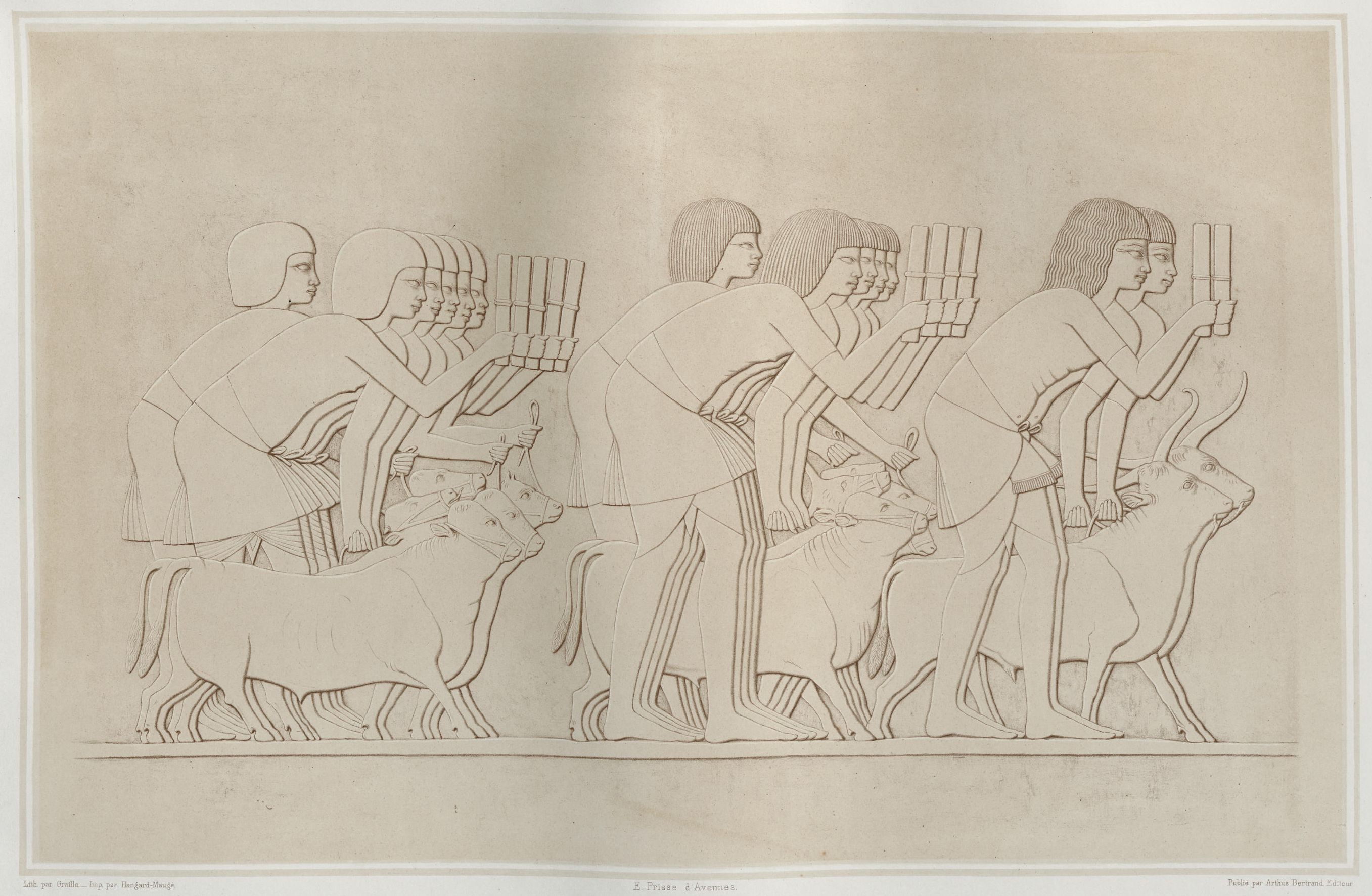
Counting the oxen – drawing of a bas-relief found in the tomb of Chamhati,
the superintendent of the royal domains during the 18th dynasty

What could be perfume containers and grooming utensils
The most important of d’Avesnes’ publications – the subject of this post – was released in installments over ten years and eventually compiled into a three volume work (one text and two illustrated atlases) in 1878 entitled: ‘Histoire de l’Art Égyptien: d’après les Monuments; Depuis les Temps les Plus Reculés Jusqu’à la Domination Romaine’ (~The history of Egyptian art from monuments from the earliest times up to Roman occupation).
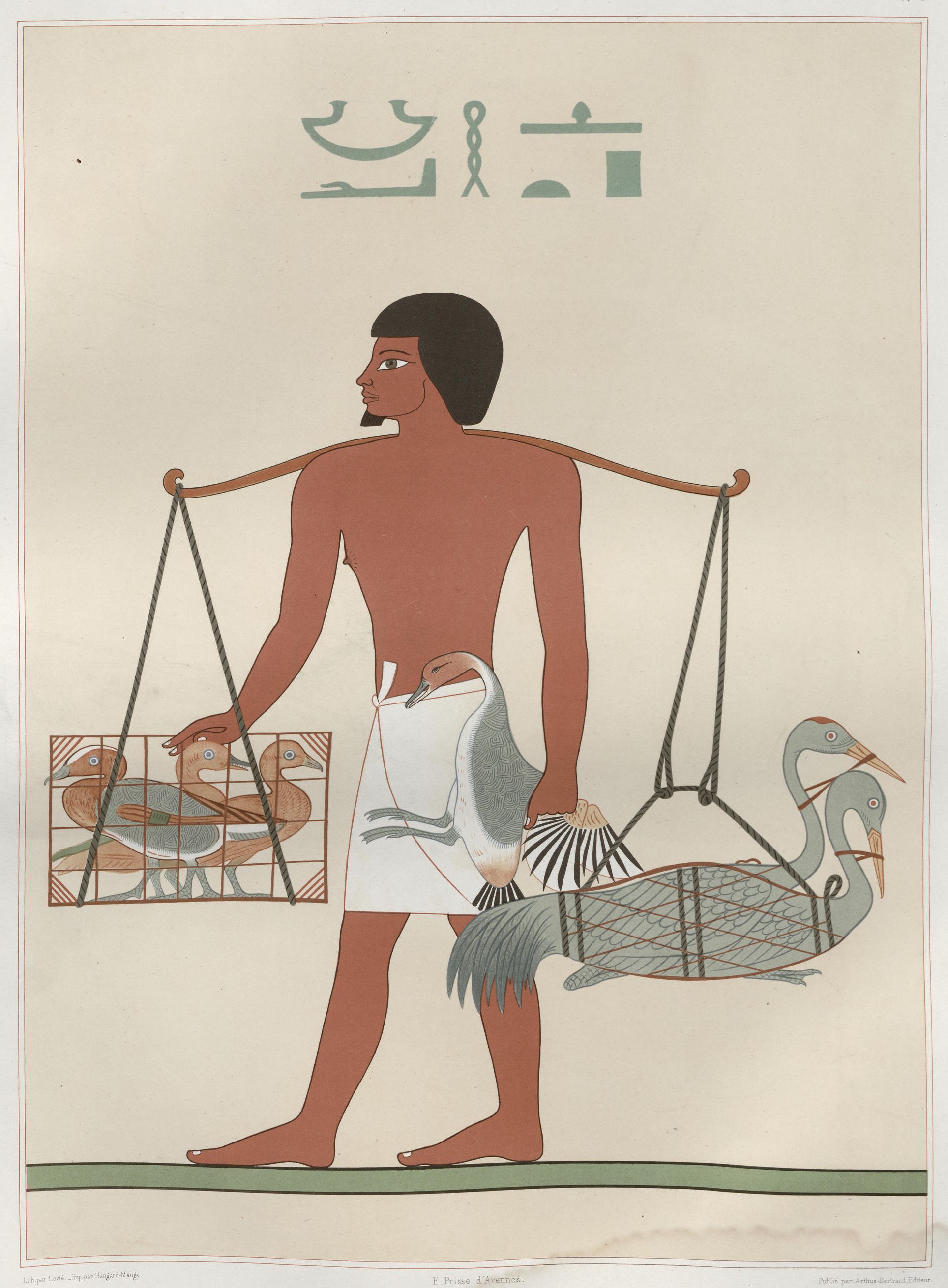
A hunter returns to his barge – from a 12th Dynasty tomb painting
(2100-1900BC) at the cemetery of Beni Hasan*
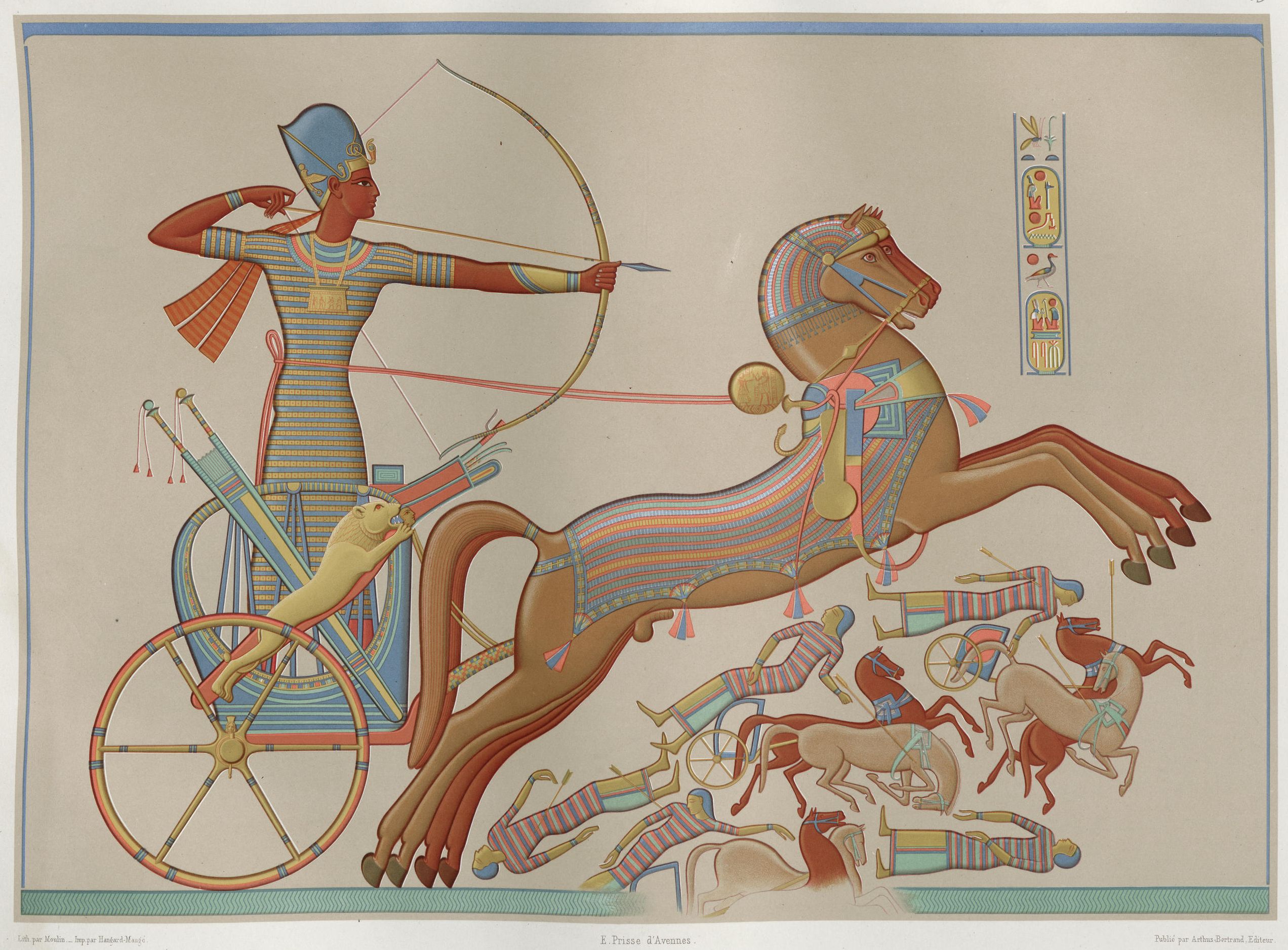
By the banks of the Orontes river, King Ramses II (Ramses-Meiamoun or Ozymandius* or Ramesses the Great, the third ruler of the XIXth dynasty and considered the most powerful Pharaoh of all) battles the Hittites (Khetas) from his chariot. Although not stated, this illustration presumably derives from a sculpture or bas-relief at the Ramesses II temple at Abu Simbel in Nubia.
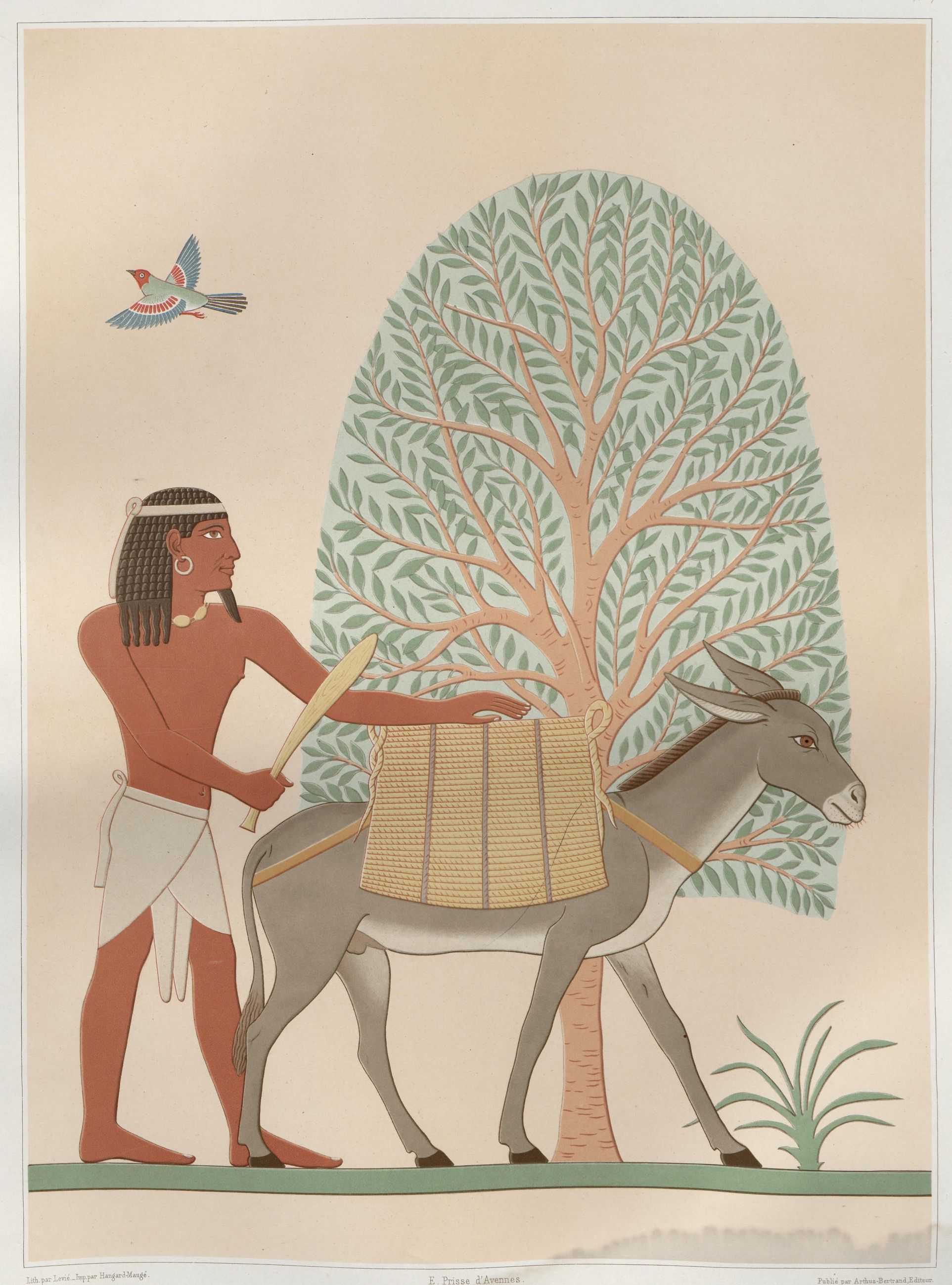
A native from the fabled and mysterious Land Of Punt carries goods on an ass
– from a painting found in the ?valley of El-Assacif at Thebes

Sketch showing the purification ritual foreigners prostrating before the Pharaoh – from the Necropolis at Thebes

Sketch of Seti I, father of Ramses II from the Necropolis at Thebes
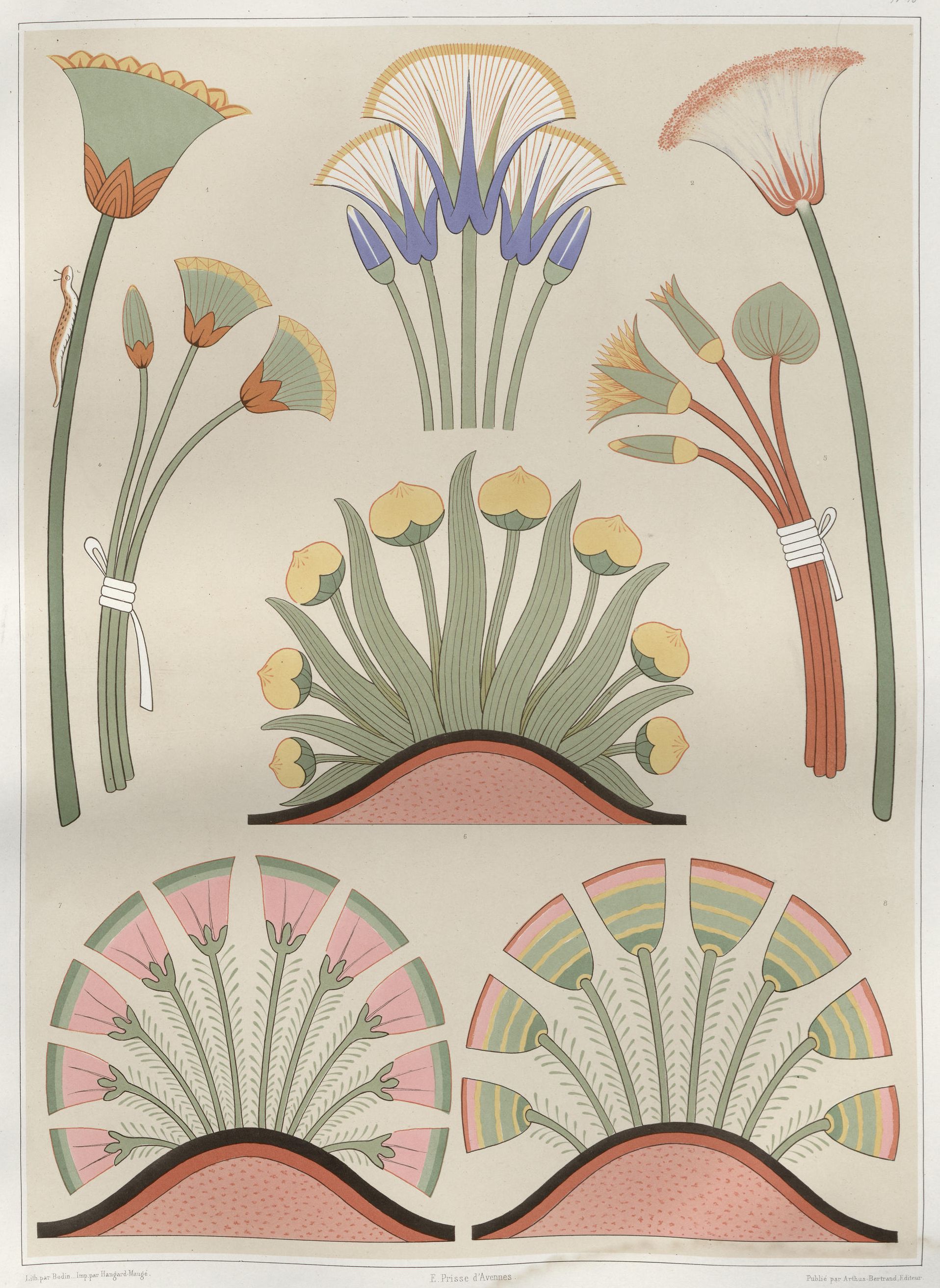
Flowers and plants derived from various monuments
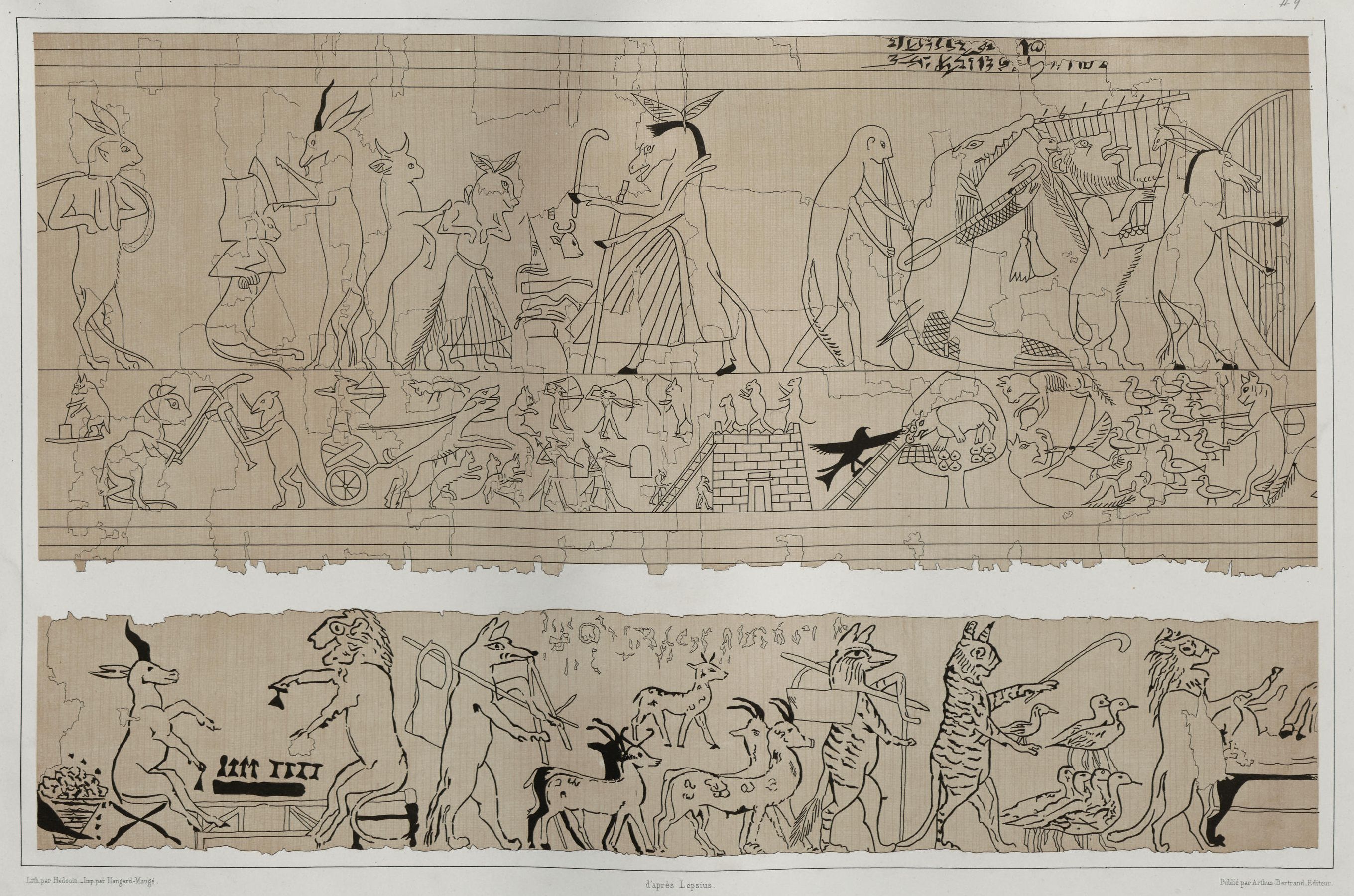
Satirical anthropomorphic ‘cartoons’ from an ancient Egyptian papyrus manuscript
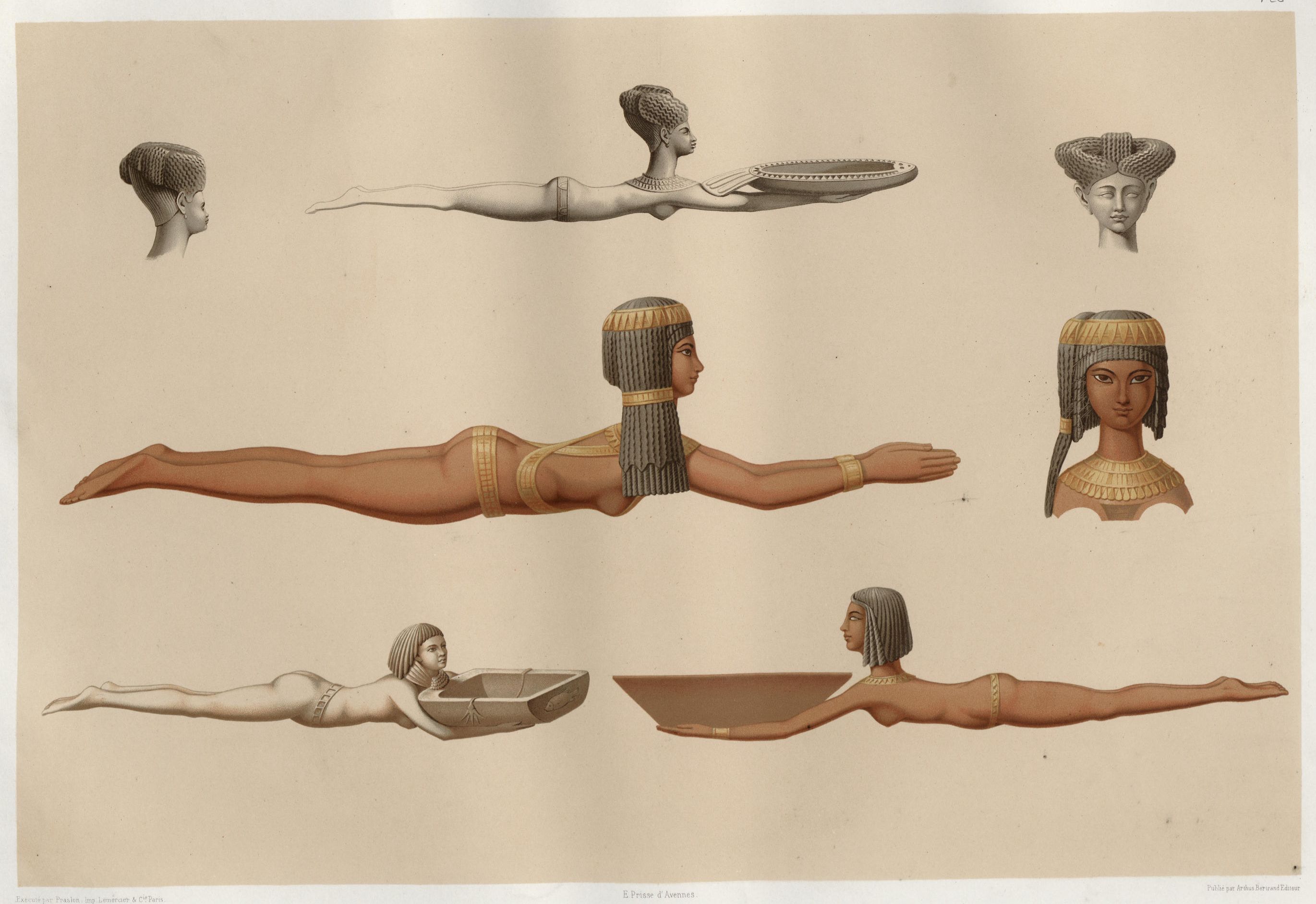
Painted wooden spoons and perfume vessels featuring
female figures of contrasting ethnicities or rank (or both)
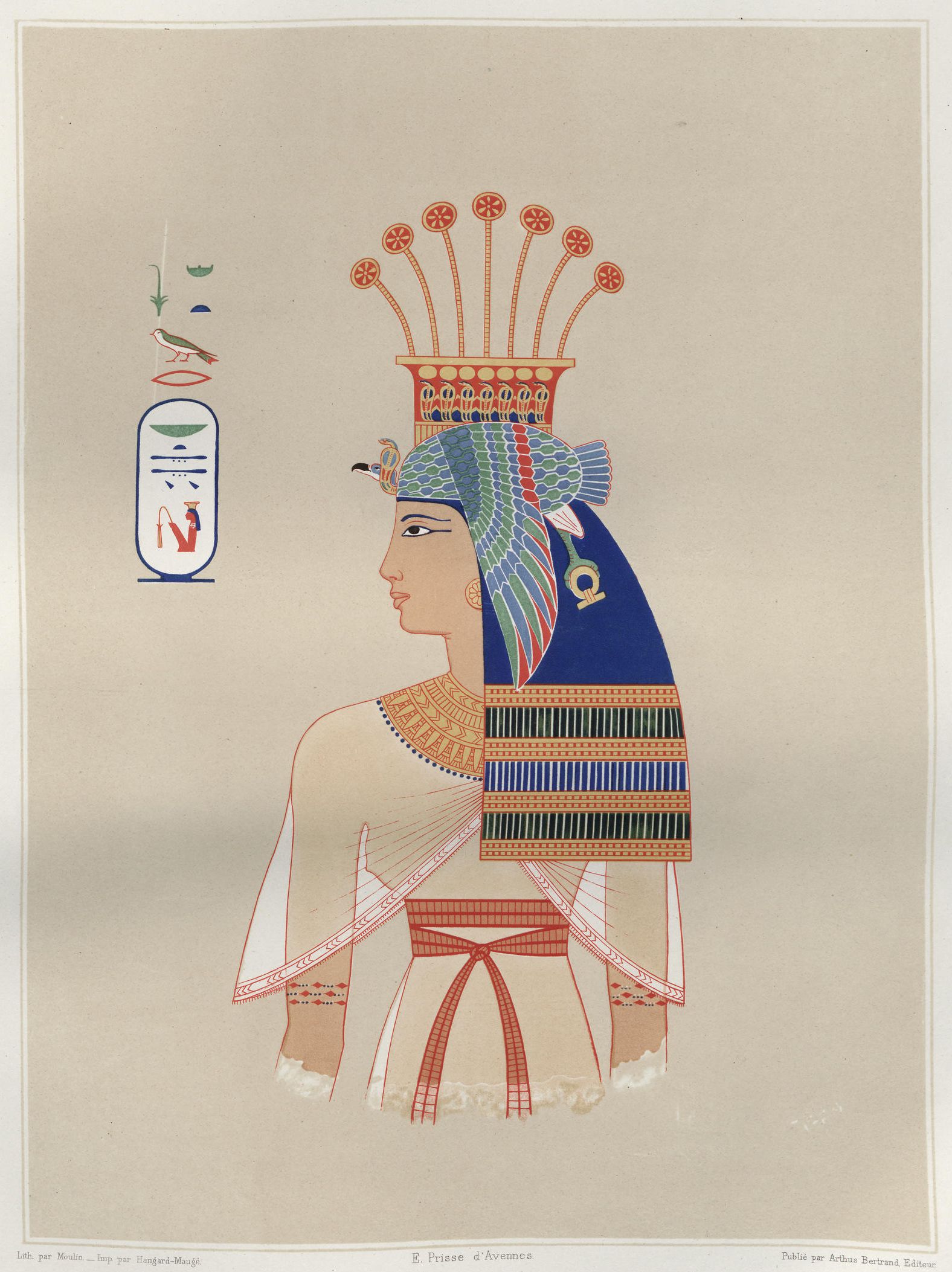
Portrait of Queen Nebto, daughter of Ramesses II (19th dynasty)
Via: The third volume of ‘Histoire de l’Art Égyptien’, Universitätsbibliothek Heidelberg.
Would you like to support Flashbak?
Please consider making a donation to our site. We don't want to rely on ads to bring you the best of visual culture. You can also support us by signing up to our Mailing List. And you can also follow us on Facebook, Instagram and Twitter. For great art and culture delivered to your door, visit our shop.


